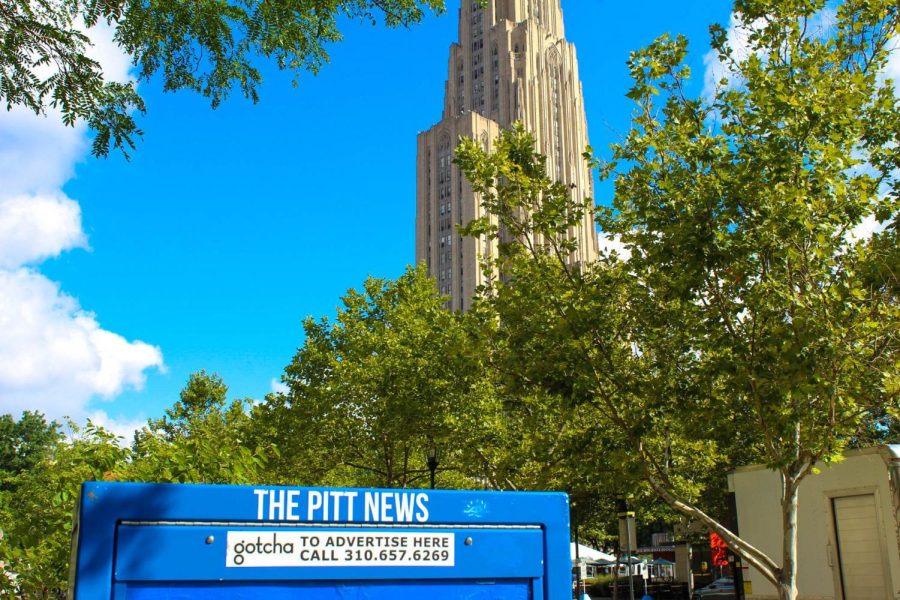Brazilian artist immerses herself in urban chaos
April 20, 2009
Students who come to Pitt from small towns often feel overwhelmed by the urban lifestyle –… Students who come to Pitt from small towns often feel overwhelmed by the urban lifestyle — the traffic, the police, the immense crowds.
But according to filmmaker Adriana Babinski, there are patterns in the urban chaos — patterns of living and interacting, of coming and going — that can unite us in shared experiences. It’s these experiences that Babinski seeks to capture in her upcoming documentary exhibit, ‘Immersion.’
‘My focus is on an urban lifestyle,’ said Babinski, a Brazil native and Pittsburgh Filmmakers graduate. ‘I wanted people to really realize and compare the similarities.’
‘Immersion’ stays true to its title.
Rather than just focusing her film on a single screen, Babinski categories her work as a ‘mirrored’ art installation. In other words, there are three different screens, arranged in a U shape, simultaneously projecting the sights of different cities from around the world (China, Brazil and the United States), with one screen for each location.
‘I wanted people to be immersed in this arena of three different cultures,’ said Babinski.
The film does not follow a single narrative, but rather progresses by theme.
‘My editing is based off what’s going on in these three different cultures, but they’re always doing similar things,’ she said.
For example, when the film focuses on music, one screen will show a chorus of drummers in Brazil, another will show a Pittsburgh blues band in the Strip District, and the third will show a solitary woodwind instrumentalist in China. There’s a different speaker for each screen, which Babinski hopes will create a feeling of engagement.
‘You can hear ambient sounds,’ said Babinski. ‘People are going to be moved not just by the image, but also by the sound.’
Babinski said the sheer diversity of the United States gave her the idea for ‘Immersion.’
‘Since I moved to Pittsburgh, I started having much more contact with different cultures,’ said Babinski. ‘It was an inspiration. I wanted to show a contrast, I wanted to go to different places but to have the same goal.’
Making ‘Immersion’ was not always easy. Babinski traveled and filmed almost entirely by herself, using her own small camera and, initially, her own funds — her trip to China was paid for out of her own pocket. But getting there was only half the trouble.
‘China was one of the most challenging [locations] because of the communication,’ said Babinski. ‘I can’t speak any Mandarin, any Chinese and very few people speak English.’
Language wasn’t the only barrier. Because the focus of her film was the urban masses, she quickly came across a unique challenge: her subjects. One of the reasons she remained without a camera crew and a large camera was to remain inconspicuous.
‘I was looking for really spontaneous and honest actions,’ said Babinski. ‘When people see a camera, they kind of act, they hide.’
Babinski also ran into trouble in her native Brazil. According to her Web site, police threatened to confiscate her camera unless she stopped filming an arrest.
‘I got the arrest on film but they weren’t happy about it,’ said Babinski on her Web site. ‘It was a little scary, but I’m glad I got it.’
Though navigating such foreign landscapes was surely difficult, Babinski is without remorse.
‘It was one of the most amazing trips I’ve ever had, especially because I was by myself,’ said Babinski. ‘I wanted to document, I wanted to experiment and go to different places. And definitely, I got what I was expecting.’
If nothing else, Babinski hopes her film will help inspire a feeling of togetherness.
‘ ‘Regardless of the way people look, their language, their religion … we are all human beings,’ said Babinski.







